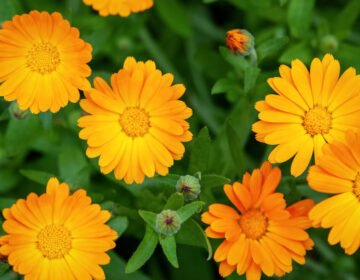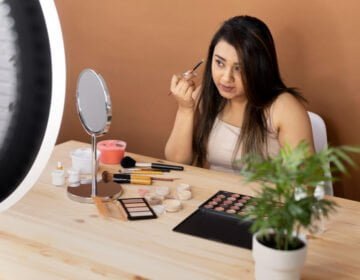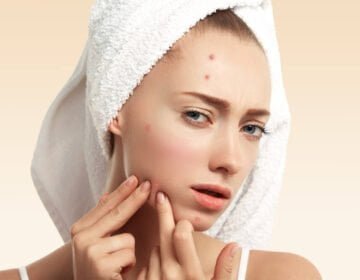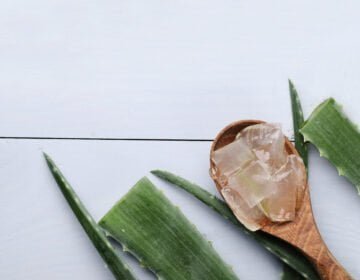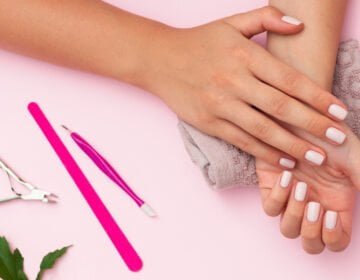
All 7 seven types of Eczema you need to know
Eczema, widely known as atopic eczema or atopic dermatitis, is a chronic skin condition characterized by itchy, red and inflamed patches of skin. And, it is not contagious which means it’s not transferable from one person to another. If you have eczema, you know that your skin does not keep the moisture which leads to dryness and irritation. This causes chemicals to be released which worsens your irritation and make you want to scratch your body. But scratching makes your body more itchy which makes it more frustrating. In this article, we will discuss seven different types of eczema, their causes and symptoms, treatments, and so on.
Types of Eczema
There are different types of eczema. Each type affects the skin differently from what areas are affected to how the skin is damaged. Now let’s have the deep knowledge about them:
Atopic Dermatitis:
Atopic dermatitis is the most commonly seen type of eczema. It usually occurs in childhood, typically between the child of age 2 months and 5 years. Usually this, atopic dermatitis becomes miler as they grow or sometimes disappears by adulthood too. However, as you grow, you can also experience flare-ups or new symptoms later in adulthood.
In this type of eczema, the symptoms are usually seen on the arms or in the creases of the knees or elbows. These symptoms can be seen on the scalp and cheeks of the children. But the important to know is that scratching these rashes, bumps or lesions can lead to infection. Moreover, the irritants that can worsen the symptoms include rough clothing, soap, household chemicals, foods, dust, and many more.
Contact Dermatitis:
Contact dermatitis is another common type of eczema which occurs when the skin comes into direct contact with an irritant or allergen causing inflammation. Symptoms are usually redness, itching, and sometimes even swelling or blistering at the site of contact.
Common irritants that cause contact dermatitis are harsh soaps, tobacco smoke, paints, detergents or chemicals. Other allergens include nickel, poison ivy, and cosmetics. So avoid using these triggering substances and use medical treatments prescribed to you by a doctor or moisturizers to help manage the symptoms of these eczema.
Dyshidrotic Eczema:
Dyshidrotic eczema also called pompholyx is a small blister you can see on your hands or feet. It typically appears in adults under the age of 40 years and you can experience intense itching feeling. Even in some cases, these blisters become large and watery. The blisters can become infected, which leads to pain and swelling and also ooze pus. These blisters usually clear up in a few weeks after their appearance but after that, the skin becomes dry and cracked which results in painful skin fissures.
Nummular Eczema:
Also known as discoid eczema is identified easily as it’s the formation of well-defined, round itchy spots or lesions on the skin which look exactly like a coin. This type of rash can appear anywhere in the body usually after a chronic skin injury and is more likely seen in men than in women. This type of eczema is non-contagious and can be controlled with regular medicines.
Major irritations caused by this disease are:
- Itching and burning sensation in the affected area
- Coin-shaped lesions
- Scaling and flaking of the skin
This type of eczema can also cause fever, malaise, or hot, tender, or painful skin. If you experience any of those symptoms it is sure that you are suffering from a skin infection that needs medication. So please make an appointment with your doctor or go to urgent care.
There are various causes for this eczema to occur however doctors can’t particularly point out one cause that might cause it. But they do believe they are factors that contribute to its development; they are:
- Insect bites
- Chemical burns
- Very dry or sensitive skin
- Frequent bathing
- Wearing rough clothes
- Harsh soaps, detergents and fabric softeners
- Itching
Neurodermatitis:
Neurodermatitis often starts with a persistent itch which is triggered by stress or emotional difficulties. Unlike other types of eczema, it does not appear in many areas of the body but is limited to only certain areas of the skin.
Symptoms:
Patients can develop symptoms on their ankles, hands, feet, wrists, shoulders, face, neck, scalp or genitals.
There are various symptoms, they are:
- Scaly skin
- Discoloured skin
- Dry, leathery or thick skin
- Pronounced skin lines
- Intense urge to itch or itching until you start feeling
- Scalp, scabs, or hair loss
It is also known as lichen simplex chronicus and is most likely to appear in those who are already suffering from dermatitis.
The most common causes of neurodermatitis are:
- People suffering from depression, anxiety or obsessive-compulsive disorder are more likely the causes
- Stress can sometimes weaken the immune system which causes outbreaks of this type of eczema
- Sometimes even bug bite allergies flare-ups in some people
- People who have dehydrated skin, allergies or poor blood flow
Seborrheic Eczema:
It’s a common type of eczema that affects oil-producing areas of the skin, including your nose, scalp, upper back, etc. In infants, the condition is called a cradle cap and in adults seborrheic eczema.
Symptoms:
This type of eczema is usually seen in infants but can also appear in people of age 30-60 years old. In adults, this condition usually comes and goes and worsens during periods of stress or cold weather. And, in infants, it clears up after some time and usually does not return. Infants who have this type of eczema have mostly greasy, scalp patches on the scalp also known as cradle caps.
There are various causes for this type of eczema however most likely to be caused by the immune system to an overgrowth of yeast that occurs on human skin. Diseases that put you at high risk of developing it are cancer, alcoholism, depression, acne, heart attack, HIV, psoriasis, stroke, rosacea, etc.
Stasis Eczema:
It is also commonly known as varicose, venous or gravitational eczema. As we get older and become less active, it weakens the veins in our legs. This leads to both varicose veins and varicose eczema. This stasis eczema is more likely to affect our lower legs and their symptoms are:
- Dry, scaly skin
- Cracked skin
- Hot, itchy spots or blisters
- Weepy, crusty patches
The skin on your lower can become fragile so it’s important to avoid scratching or picking the blisters. This type of eczema usually affects people having poor circulation and those over 50 years old and is more likely to be seen in women. Risk factors for developing this kind of eczema include multiple time pregnancies, high blood pressure, kidney failure, and so on.
FAQ’s
Which is the most common type of eczema?
Atopic eczema is the most common type of eczema which is found both in adults and children.
Which foods are associated with types of eczema?
Foods that are most likely to cause eczema aflare up are eggs, dairy, citrus, tomatoes, soy, gluten, and certain types of spices like cinnamon, vanilla, and cloves, etc.
What triggers atopic eczema?
It depends on what type of eczema that person has. For example, atopic eczema is triggered by dust miles, cold weather, food allergies, and irritants like soap, detergents, etc. On the other hand, stasis eczema is triggered by poor circulation of blood flow in the legs.



